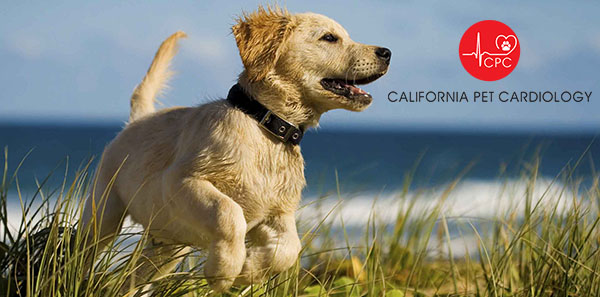

Chronic valve disease
This disease accounts for approximately 75% of the heart diseases veterinary cardiologists see in the clinic. Chronic valve disease has many names: Myxomatous mitral valve disease, mitral valve disease, atrioventricular valve disease, endocardiosis, degenerative valve disease, valve insufficiency. Although there are many names, they all describe the same pathologic (disease) process.
In chronic valve disease the mitral valve is the most common valve to be affected. This valve separates the left top and bottom chambers of the heart. Less frequently, the tricuspid valve (valve separating the right top and bottom chambers of the heart) can also be affected. In this disease the valves become distorted, thickened, floppy, and leaky.
As a result, blood leaks back into the top chamber causing significant changes to the structure and function of the left heart. This leakage of blood back into the top chambers of the heart creates the murmur appreciated by your veterinarian. Excess leakage, leads to an enlarged top chamber, which leads to high pressures and enlarged and leaky blood vessels. Those leaky blood vessels begin to weep fluid onto the lungs-this is congestive heart failure and it can be life threatening.
Many dogs are affected by this disease and never develop any clinical manifestations (highlighted link). Those that do have the disease usually present with signs years after developing the disease. There are some breeds (highlighted and linked to common chronic valve breeds) that are more at risk of developing chronic valve disease.
The cardiologist performs an echocardiogram (ultrasound of the heart) to confirm the presence of the disease and determine the severity. Although currently, there are no medications proven to slow progression of the disease process, there are many medications to help control the clinical manifestations of the disease and improve quality of care. Many pets maintain an acceptable quality of life for a period of time after the development of congestive heart failure.
Back
In chronic valve disease the mitral valve is the most common valve to be affected. This valve separates the left top and bottom chambers of the heart. Less frequently, the tricuspid valve (valve separating the right top and bottom chambers of the heart) can also be affected. In this disease the valves become distorted, thickened, floppy, and leaky.
As a result, blood leaks back into the top chamber causing significant changes to the structure and function of the left heart. This leakage of blood back into the top chambers of the heart creates the murmur appreciated by your veterinarian. Excess leakage, leads to an enlarged top chamber, which leads to high pressures and enlarged and leaky blood vessels. Those leaky blood vessels begin to weep fluid onto the lungs-this is congestive heart failure and it can be life threatening.
Many dogs are affected by this disease and never develop any clinical manifestations (highlighted link). Those that do have the disease usually present with signs years after developing the disease. There are some breeds (highlighted and linked to common chronic valve breeds) that are more at risk of developing chronic valve disease.
The cardiologist performs an echocardiogram (ultrasound of the heart) to confirm the presence of the disease and determine the severity. Although currently, there are no medications proven to slow progression of the disease process, there are many medications to help control the clinical manifestations of the disease and improve quality of care. Many pets maintain an acceptable quality of life for a period of time after the development of congestive heart failure.
Back
